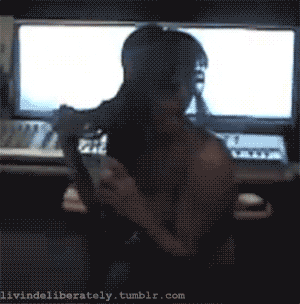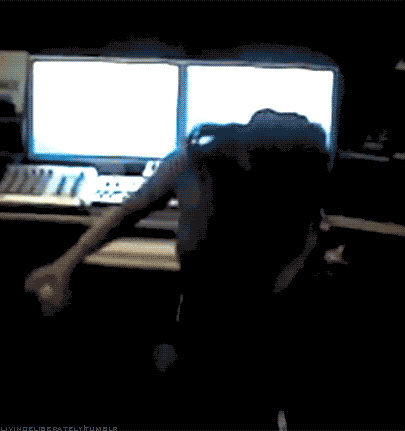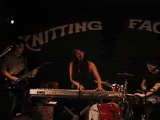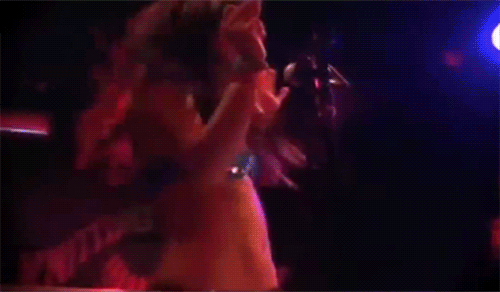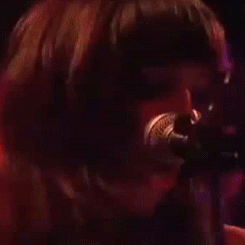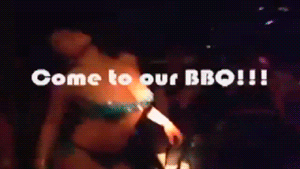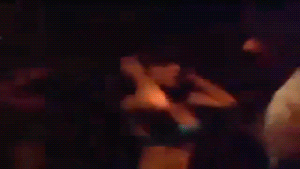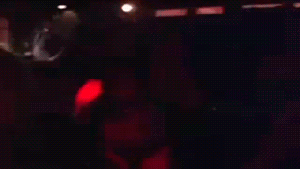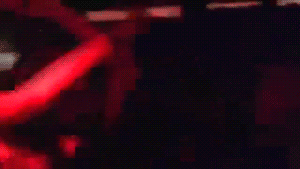zondag 31 januari 2010
vrijdag 29 januari 2010
RETRO PHYSICAL with noize trip in the studio
RETRO PHYSICAL MP3
http://www.mediafire.com/?mlnwmmyezyj
We live in a world where, sadly most producers work out of their mothers basements, constantly regurgitating the same old tired beatz over and over again, like people won’t notice. Luckily for you, three producers in Philly, who go by the name Noize Trip seek to change the status quo. Though they all come from vastly different backgrounds, these guys work together like a finely oiled classic car, meshing their talents to produce new and fresh sounds on a daily for the likes of; The peas, The Roots, Macey Gray, not to forget the delicious Fergie and Se7en. Most days you can find them at Larry Gold’s, toiling away amid a myriad of vinyl, hot tube gear, and computer screens tethered to a handful of computers and laptops. We expect you will all be hearing from them very soon! Go To Our Website www.noizetripllc.com
LADY GAGA' S OUTRAGEOUS PERSONA BORN IN PARSIPPANY, NEW JERSEY

by lisa rose/the star-ledger
january 21, 2010
The bus from New York dropped off Stefani Germanotta along Route 46 in Parsippany. It was morning in a suburban stretch of office parks but she looked ready to strut into a nightclub, with tumbling black hair, dark eyeliner, gold pants and Herman Munster platform heels
She hiked a quarter-mile down New Road to reach Rob Fusari’s recording studio. At the time, Germanotta was a 19-year-old singer-songwriter dreaming of becoming the next Fiona Apple.
She was developing her sound with Fusari, a producer who had helped pen hits by Destiny’s Child and Will Smith. Over the course of four months, Germanotta commuted from New York to Jersey seven days a week, radically reshaping her approach. Fusari goaded her to experiment, swapping rock riffs for dance beats.In that Parsippany studio in 2006, Germanotta was reborn as Lady Gaga
Fusari, 41, explains: “One morning, I was reading an article about how difficult it is for women to succeed in the rock genre. I loved what we were doing, but it wasn’t going to be an easy sell. I said, ‘Stef, what if we sit down today, abandon what we were going to work on and I’ll sit at the drum machine, do a beat and we’ll start with a more dance thing.’ She’s like, ‘No way. I’m not doing it.’ ”
They took a break at Chili’s, their regular lunch spot, and Fusari convinced Germanotta to test his idea. By day’s end, the two completed the tune, “Beautiful, Dirty, Rich,” which eventually landed on Gaga’s debut album, “The Fame.”
“That song opened the floodgates,” says Fusari, a Livingston native who majored in music management at William Paterson University. “We never went back to the rock stuff. I played it for Joshua Sarubin, who was at Island Def Jam and he’s like, ‘I gotta get this girl in here next week.’ ”
During that meeting, chairman Antonio “L.A.” Reid stopped in and predicted that she was going to change music for women.
“There was something unusual about her,” says Sarubin, a Montclair resident. “She sat down at the piano in a showcase room and the way she played and the lyrics and the way she acted and sang was just so different and in your face, and you couldn’t turn away. She was wearing these crazy white thigh-high boots and a black minidress and she had this presence like, ‘I’m sexy and I don’t care what anybody has to say about it.’ ”
A vastly self-aware entertainer matching pop hooks with alien fashions, Gaga is the product of attention-deficit culture. She reinvents herself faster than Madonna on a treadmill, exhibiting multiple personalities within the span of a single video. Yet she is not simply a puppet for stylists and photographers.
Gaga is a classically trained musician who earned early admission to New York University. She could create more challenging music if she wanted, but then she wouldn’t have a mass audience to mess with. In her world, sex blends with violence and gender is subjective. Her whole career is like a master act of satire.
Today, Lady Gaga is a platinum-selling style queen, but Fusari still remembers her as a feisty young Manhattanite with the resilience to keep writing and recording after her first major label deal fell through. It took years for her to find her place in the pop stratosphere. (She performs tomorrow and Sunday at Radio City Music Hall. She was unavailable for comment for this story.)
“Radio Ga Ga”
The name Lady Gaga may sound like some avant garde in-joke but it’s actually a reference to the Queen hit, “Radio Ga Ga,” one of Fusari’s favorites from the band.
“Every day, when Stef came to the studio, instead of saying hello, I would start singing ‘Radio Ga Ga,’ ” Fusari explains. “That was her entrance song.” Germanotta was in the midst of brainstorming a stage moniker, when she received a text from Fusari that read “Lady Gaga.” “It was actually a glitch,” says Fusari. “I typed ‘Radio Ga Ga’ in a text and it did an autocorrect so somehow ‘Radio’ got changed to ‘Lady.’ She texted me back, ‘That’s it.’ After that day, she was Lady Gaga. She’s like. ‘Don’t ever call me Stefani again.’ ”
Fusari first met the artist formerly known as Stefani Joanne Angelina Germanotta in 2006 when he was searching for musicians he could mentor to create a female version of the Strokes. She performed during a songwriters’ night at the now-closed New York club, the Cutting Room. One of Fusari’s friends called him from the show and put him on the phone with Gaga
“While I was talking to her, I was near the computer so I went to her page on PureVolume and had the music on real low in the background,” Fusari says.
“Quite frankly, it sounded wedding band-ish, but I could tell that this person had more to offer creatively so I invited her to the studio.” She took an 8 p.m. bus to Parsippany from the Port Authority and Fusari waited for her at the stop with a friend.
“We’re in the car and we see a girl through the window of this pizzeria,” Fusari says. “My buddy goes, ‘I think that’s her.’ I was hoping that wasn’t her. I had a clear vision of what she should look like and that wasn’t it. I was hoping to find someone who looked a little grungy, like they just rolled out of bed. She was more like a guidette, for lack of a better term.” He continues, “Still, there was something quirky about her. She was mixing the decades in terms of fashion. There was something very ’60s about her but also something sort of ’90s. My friend comes out with her and it’s a short ride back to the studio and I was thinking, ‘This ain’t gonna work.’
Seeing a superstar
Although he was skeptical, Fusari asked her to sample one of her songs on the piano.
He says, “Within 15 seconds, I’m like, ‘This is it. My life is about to change.’ While she’s playing, I’m on my phone e-mailing my attorney like, ‘I need a contract tomorrow.’ I totally saw superstar potential. I just didn’t know in what form or what genre it was going to be.”
Fusari was focused on the sound while Gaga was also interested in making a fashion statement.
“She kept this scrapbook of all these different things she would see in magazines,” Fusari says. “It wasn’t always clothes. It might just be like a neon sign. It might be somebody’s hand with a ring on it. She would show it to me and I’d be like, ‘Yeah, that’s great, Stef.’ I wasn’t interested.”
In fact, he was often reluctant to go out in public with her because of her bizarre wardrobe. And this was before she started wrapping herself in plastic and furs. He remembers one particularly odd ensemble she put together on the town in Miami.
“It looked like a one-piece bathing suit with these shoes that looked 3 feet tall and a ripped-up jean skirt with one leg attached. The jewelry looked like it was from Mars. I’m like, ‘Stef, I’ll either walk behind or in front of you. I’m not walking next to you.’ ”
She walked in front. Even in anything-goes New York, when she was dressed for nothing in particular, she drew stares.
“She would go to Starbucks and I would be embarrassed to go with her because of her outfits,” says Sarubin, who now works for Sony/ATV Music Publishing. “She did it 24/7 and that to me is what makes a star. She lived it. One time, we were eating lunch and she was like, ‘Oh Josh, you look at me like no boyfriend I ever had.’ I was like, ‘Wow, you just think you’re it.’ ”
Dealing with rejection
That confidence was shaken when she got dropped from Island Def Jam after just a few months. The reason the company booted her remains a mystery, but word came down from Reid’s office that they were severing the contract
There may have been people at the company who got turned off because of the outfits and the overtly sexual lyrics,” says Sarubin. “It was behind my back because I never heard it. She maybe could have stayed with the label a little while longer, but I didn’t want her to be in a situation where people didn’t get it. She was too good. It was painful because I absolutely thought she was going to be my next big thing.”
Gaga was wondering if she should ditch music entirely. Fusari encouraged her to rest for awhile and spend time with her family. She eventually wrote a revenge song about Reid, one of some 40 unreleased and unfinished tracks in the Parsippany archives.
Getting rejected by Reid made her even more rebellious and outlandish in her appearance. Her clothes grew skimpier and she got deeper into the parallel reality of Lady Gaga. Fusari introduced her to songwriter, RedOne, with whom she collaborated on the breakthrough singles, “Just Dance” and “Poker Face,” a psychosexual screed set to a club beat
Fusari called his friend, Vince Herbert, who had linked him up with Destiny’s Child back in the day. Herbert signed Gaga to Streamline Records, an affiliate of Interscope. Before the deal could go through, however, they had to meet Jimmy Iovine, the head of the conglomerate and an industry legend who’d worked as engineer with such artists as Bruce Springsteen and John Lennon.
“What we saw was a very quiet, reserved Gaga,” says Fusari. “I don’t know if she was intimidated. It was definitely one of her record idols. She knew the acts he had done. Jimmy talked about Mick Jagger, John Lennon and at the end of the meeting, he stood up and said, ‘Let’s give it a try.’ ”
It had been such an odyssey getting signed a second time, Fusari didn’t feel like celebrating that night. He had doubts the deal would even happen.
Fusari found himself a bit flummoxed when Gaga grew more conceptual in her performance style. She teamed with a glam-rock deejay named Lady Starlight in 2007 to launch a downtown Manhattan burlesque revue.
Drifting away from the diva
“She was doing this striptease act with music in the background,” says Fusari. “It was all these great songs we had done, and they were playing while these two girls were doing a comedy-burlesque strip show. I didn’t even want them using my music for that. I felt like I had worked at finding a sound for this artist and I was proud of it, and she was undermining it with the outfits, with the comedy.”
The Jersey music guy has drifted away from the Dada diva but they remain friends and he hopes to go back into the studio with her at some point. For now, however, he’s keeping his distance from the spectacle.
“It was a bit of the mini-Frankenstein here,” says Fusari. “It was like the doctor who creates this thing and all of a sudden when it lives, it goes off on its own. Of course I miss her, but I’m also very proud of her and happy that it went as big as it did
january 21, 2010
The bus from New York dropped off Stefani Germanotta along Route 46 in Parsippany. It was morning in a suburban stretch of office parks but she looked ready to strut into a nightclub, with tumbling black hair, dark eyeliner, gold pants and Herman Munster platform heels
She hiked a quarter-mile down New Road to reach Rob Fusari’s recording studio. At the time, Germanotta was a 19-year-old singer-songwriter dreaming of becoming the next Fiona Apple.
She was developing her sound with Fusari, a producer who had helped pen hits by Destiny’s Child and Will Smith. Over the course of four months, Germanotta commuted from New York to Jersey seven days a week, radically reshaping her approach. Fusari goaded her to experiment, swapping rock riffs for dance beats.In that Parsippany studio in 2006, Germanotta was reborn as Lady Gaga
Fusari, 41, explains: “One morning, I was reading an article about how difficult it is for women to succeed in the rock genre. I loved what we were doing, but it wasn’t going to be an easy sell. I said, ‘Stef, what if we sit down today, abandon what we were going to work on and I’ll sit at the drum machine, do a beat and we’ll start with a more dance thing.’ She’s like, ‘No way. I’m not doing it.’ ”
They took a break at Chili’s, their regular lunch spot, and Fusari convinced Germanotta to test his idea. By day’s end, the two completed the tune, “Beautiful, Dirty, Rich,” which eventually landed on Gaga’s debut album, “The Fame.”
“That song opened the floodgates,” says Fusari, a Livingston native who majored in music management at William Paterson University. “We never went back to the rock stuff. I played it for Joshua Sarubin, who was at Island Def Jam and he’s like, ‘I gotta get this girl in here next week.’ ”
During that meeting, chairman Antonio “L.A.” Reid stopped in and predicted that she was going to change music for women.
“There was something unusual about her,” says Sarubin, a Montclair resident. “She sat down at the piano in a showcase room and the way she played and the lyrics and the way she acted and sang was just so different and in your face, and you couldn’t turn away. She was wearing these crazy white thigh-high boots and a black minidress and she had this presence like, ‘I’m sexy and I don’t care what anybody has to say about it.’ ”
A vastly self-aware entertainer matching pop hooks with alien fashions, Gaga is the product of attention-deficit culture. She reinvents herself faster than Madonna on a treadmill, exhibiting multiple personalities within the span of a single video. Yet she is not simply a puppet for stylists and photographers.
Gaga is a classically trained musician who earned early admission to New York University. She could create more challenging music if she wanted, but then she wouldn’t have a mass audience to mess with. In her world, sex blends with violence and gender is subjective. Her whole career is like a master act of satire.
Today, Lady Gaga is a platinum-selling style queen, but Fusari still remembers her as a feisty young Manhattanite with the resilience to keep writing and recording after her first major label deal fell through. It took years for her to find her place in the pop stratosphere. (She performs tomorrow and Sunday at Radio City Music Hall. She was unavailable for comment for this story.)
“Radio Ga Ga”
The name Lady Gaga may sound like some avant garde in-joke but it’s actually a reference to the Queen hit, “Radio Ga Ga,” one of Fusari’s favorites from the band.
“Every day, when Stef came to the studio, instead of saying hello, I would start singing ‘Radio Ga Ga,’ ” Fusari explains. “That was her entrance song.” Germanotta was in the midst of brainstorming a stage moniker, when she received a text from Fusari that read “Lady Gaga.” “It was actually a glitch,” says Fusari. “I typed ‘Radio Ga Ga’ in a text and it did an autocorrect so somehow ‘Radio’ got changed to ‘Lady.’ She texted me back, ‘That’s it.’ After that day, she was Lady Gaga. She’s like. ‘Don’t ever call me Stefani again.’ ”
Fusari first met the artist formerly known as Stefani Joanne Angelina Germanotta in 2006 when he was searching for musicians he could mentor to create a female version of the Strokes. She performed during a songwriters’ night at the now-closed New York club, the Cutting Room. One of Fusari’s friends called him from the show and put him on the phone with Gaga
“While I was talking to her, I was near the computer so I went to her page on PureVolume and had the music on real low in the background,” Fusari says.
“Quite frankly, it sounded wedding band-ish, but I could tell that this person had more to offer creatively so I invited her to the studio.” She took an 8 p.m. bus to Parsippany from the Port Authority and Fusari waited for her at the stop with a friend.
“We’re in the car and we see a girl through the window of this pizzeria,” Fusari says. “My buddy goes, ‘I think that’s her.’ I was hoping that wasn’t her. I had a clear vision of what she should look like and that wasn’t it. I was hoping to find someone who looked a little grungy, like they just rolled out of bed. She was more like a guidette, for lack of a better term.” He continues, “Still, there was something quirky about her. She was mixing the decades in terms of fashion. There was something very ’60s about her but also something sort of ’90s. My friend comes out with her and it’s a short ride back to the studio and I was thinking, ‘This ain’t gonna work.’
Seeing a superstar
Although he was skeptical, Fusari asked her to sample one of her songs on the piano.
He says, “Within 15 seconds, I’m like, ‘This is it. My life is about to change.’ While she’s playing, I’m on my phone e-mailing my attorney like, ‘I need a contract tomorrow.’ I totally saw superstar potential. I just didn’t know in what form or what genre it was going to be.”
Fusari was focused on the sound while Gaga was also interested in making a fashion statement.
“She kept this scrapbook of all these different things she would see in magazines,” Fusari says. “It wasn’t always clothes. It might just be like a neon sign. It might be somebody’s hand with a ring on it. She would show it to me and I’d be like, ‘Yeah, that’s great, Stef.’ I wasn’t interested.”
In fact, he was often reluctant to go out in public with her because of her bizarre wardrobe. And this was before she started wrapping herself in plastic and furs. He remembers one particularly odd ensemble she put together on the town in Miami.
“It looked like a one-piece bathing suit with these shoes that looked 3 feet tall and a ripped-up jean skirt with one leg attached. The jewelry looked like it was from Mars. I’m like, ‘Stef, I’ll either walk behind or in front of you. I’m not walking next to you.’ ”
She walked in front. Even in anything-goes New York, when she was dressed for nothing in particular, she drew stares.
“She would go to Starbucks and I would be embarrassed to go with her because of her outfits,” says Sarubin, who now works for Sony/ATV Music Publishing. “She did it 24/7 and that to me is what makes a star. She lived it. One time, we were eating lunch and she was like, ‘Oh Josh, you look at me like no boyfriend I ever had.’ I was like, ‘Wow, you just think you’re it.’ ”
Dealing with rejection
That confidence was shaken when she got dropped from Island Def Jam after just a few months. The reason the company booted her remains a mystery, but word came down from Reid’s office that they were severing the contract
There may have been people at the company who got turned off because of the outfits and the overtly sexual lyrics,” says Sarubin. “It was behind my back because I never heard it. She maybe could have stayed with the label a little while longer, but I didn’t want her to be in a situation where people didn’t get it. She was too good. It was painful because I absolutely thought she was going to be my next big thing.”
Gaga was wondering if she should ditch music entirely. Fusari encouraged her to rest for awhile and spend time with her family. She eventually wrote a revenge song about Reid, one of some 40 unreleased and unfinished tracks in the Parsippany archives.
Getting rejected by Reid made her even more rebellious and outlandish in her appearance. Her clothes grew skimpier and she got deeper into the parallel reality of Lady Gaga. Fusari introduced her to songwriter, RedOne, with whom she collaborated on the breakthrough singles, “Just Dance” and “Poker Face,” a psychosexual screed set to a club beat
Fusari called his friend, Vince Herbert, who had linked him up with Destiny’s Child back in the day. Herbert signed Gaga to Streamline Records, an affiliate of Interscope. Before the deal could go through, however, they had to meet Jimmy Iovine, the head of the conglomerate and an industry legend who’d worked as engineer with such artists as Bruce Springsteen and John Lennon.
“What we saw was a very quiet, reserved Gaga,” says Fusari. “I don’t know if she was intimidated. It was definitely one of her record idols. She knew the acts he had done. Jimmy talked about Mick Jagger, John Lennon and at the end of the meeting, he stood up and said, ‘Let’s give it a try.’ ”
It had been such an odyssey getting signed a second time, Fusari didn’t feel like celebrating that night. He had doubts the deal would even happen.
Fusari found himself a bit flummoxed when Gaga grew more conceptual in her performance style. She teamed with a glam-rock deejay named Lady Starlight in 2007 to launch a downtown Manhattan burlesque revue.
Drifting away from the diva
“She was doing this striptease act with music in the background,” says Fusari. “It was all these great songs we had done, and they were playing while these two girls were doing a comedy-burlesque strip show. I didn’t even want them using my music for that. I felt like I had worked at finding a sound for this artist and I was proud of it, and she was undermining it with the outfits, with the comedy.”
The Jersey music guy has drifted away from the Dada diva but they remain friends and he hopes to go back into the studio with her at some point. For now, however, he’s keeping his distance from the spectacle.
“It was a bit of the mini-Frankenstein here,” says Fusari. “It was like the doctor who creates this thing and all of a sudden when it lives, it goes off on its own. Of course I miss her, but I’m also very proud of her and happy that it went as big as it did
woensdag 20 januari 2010
LINA MORGANA
She had one of the most unqiue and beautiful voices in the world. All of those who heard her sing, were overwhelmed by the beauty and power of her voice.
Lina was stunning. Her bright eyes and smile were extraordinary. Whenever she walked into a room, her brightness and light were obvious and her smile and laugh infectious.
Lina died tragically at the age of 19 on October 4, 2008. It is believed that Lina committed suicide by jumping from the roof of a ten story hotel, although this has not been publicly confirmed by her family.
"Spin U Around" is a song by Lina Morgana and Lady Gaga. It was written by Gaga and Rob Fusari (Team Love Child) sometime between 2006-2007. Morgana had personally met with Gaga to ask if she'd write for her. The song makes a reference to, "Love Sick Girl".
"Wunderland" is a song by Lina Morgana and Lady Gaga. It was written by Gaga, Rob Fusari (Team Love Child), and Nicolette "Nikki" Gregoroff sometime between 2006-2007.
zaterdag 16 januari 2010
BEAUTY BAR IN MANHATTAN
231 E 14th St (between 2nd Ave & 3rd Ave)
New York, NY 10003
Neighborhoods: Gramercy, East Village
quote brendan sullivan
quote brendan sullivan
vrijdag 8 januari 2010
KNITTING FACTORY

The Knitting Factory is a music venue and concert house with locations in Brooklyn, Boise, Reno, and Spokane. The club originally specialized in jazz and experimental music and has expanded to showcasing all genres of music, performing arts and comedy.
The Knitting Factory was opened in 1987 by Michael Dorf and Bob Appel, both from Milwaukee, Wisconsin. The original location was in Manhattan on Houston Street, almost equidistant between CBGB and the Bottom Line. Initially, the venue was supposed
 to be an art gallery with a performance space and cafe, as well as a home for experimental music.[1] The club quickly emerged as a home for the sounds that did not neatly fit into the categories of jazz or rock. Artists including Sonic Youth, Sound of Urchin, Cassandra Wilson, Yo La Tengo, Cecil Taylor, Cluster, and Bill Frisell played there. The musicians who would end up forming the band Soul Coughing first met at the Knitting Factory, where Mike Doughty, who would become the lead singer, worked as a doorman. Soul Coughing played many of their early shows there.
to be an art gallery with a performance space and cafe, as well as a home for experimental music.[1] The club quickly emerged as a home for the sounds that did not neatly fit into the categories of jazz or rock. Artists including Sonic Youth, Sound of Urchin, Cassandra Wilson, Yo La Tengo, Cecil Taylor, Cluster, and Bill Frisell played there. The musicians who would end up forming the band Soul Coughing first met at the Knitting Factory, where Mike Doughty, who would become the lead singer, worked as a doorman. Soul Coughing played many of their early shows there.As demand grew for recordings of the live performances at The Knitting Factory, Dorf and Appel began to tape performances and distribute them to radio stations.[2] Appel left the business in 1991 to work independently in production. Dorf moved the club to Tribeca in 1994, and continued to build the recording and festival businesses. Dorf opened a new club locations in Los Angeles in 2000 under the parent company of Knitting Factory Entertainment.
Jared Hoffman, the founder of Instinct Records, which was acquired by Knitting Factory Entertainment in 2002, took over as CEO of the company from Dorf in 2004. In 2006 he oversaw the acquisition of concert promoter Bravo Entertainment and, in 2008, re-branded two of Bravo's clubs (one in Boise, Idaho, and another in Spokane, Washington) as Knitting Factory Concert Houses. Because of its buyout of Bravo, The Knitting Factory now promotes much more mainstream concert tours, such as Puddle of Mudd, Lyle Lovett, and LeAnn Rimes throughout the northwest United States.
In 2007 The Knitting Factory and XMU (XM 43) forged an exclusive partnership for the XM channel to record and broadcast concerts from both Knitting Factory locations. Hoffman left the company at the end of 2008.
 In July 2008 the owners announced their move to close the Manhattan location and move to a much smaller space in Williamsburg, Brooklyn.[3] But they changed their minds and reopened the Tribeca location, and continued putting on shows with bands including The Shells, the Cro-Mags, and New Model Army.
In July 2008 the owners announced their move to close the Manhattan location and move to a much smaller space in Williamsburg, Brooklyn.[3] But they changed their minds and reopened the Tribeca location, and continued putting on shows with bands including The Shells, the Cro-Mags, and New Model Army.In July 2009 it was reported that the Los Angeles location was closing.
The last show in the Manhattan location however was on July 25, 2009, and was a Staff Infection in which staff took to the stage and said goodbye to its beloved club. The last band to play KFNY was 12,000 Trees featuring 3 Knit staffers. The new location was set to reopen in the new Brooklyn location in July 2009.
On September 9, 2009, The Knitting Factory relocated to the former space of the Luna Lounge — itself a Manhattan transplant — at 361 Metropolitan Avenue. This location, completely remodeled, is now in operation and has a capacity of about 300. Improving on the old Tribeca location, the venue now has a full-service and independent bar that is open nightly, and offers special events such as film screenings, comedy, and children's shows. The venue opened with a performance by Les Savy Fav, and has since hosted many renowned acts, such as We Were Promised Jetpacks, MGMT, Hawthorne Heights, We Shot the Moon, Titus Andronicus, Screaming Females, Good Old War, Secret Machines, and Ted Leo and the Pharmacists.
LADY GAGA
15 february 2006
7 july 2007
11 august 2007
Abonneren op:
Posts (Atom)




